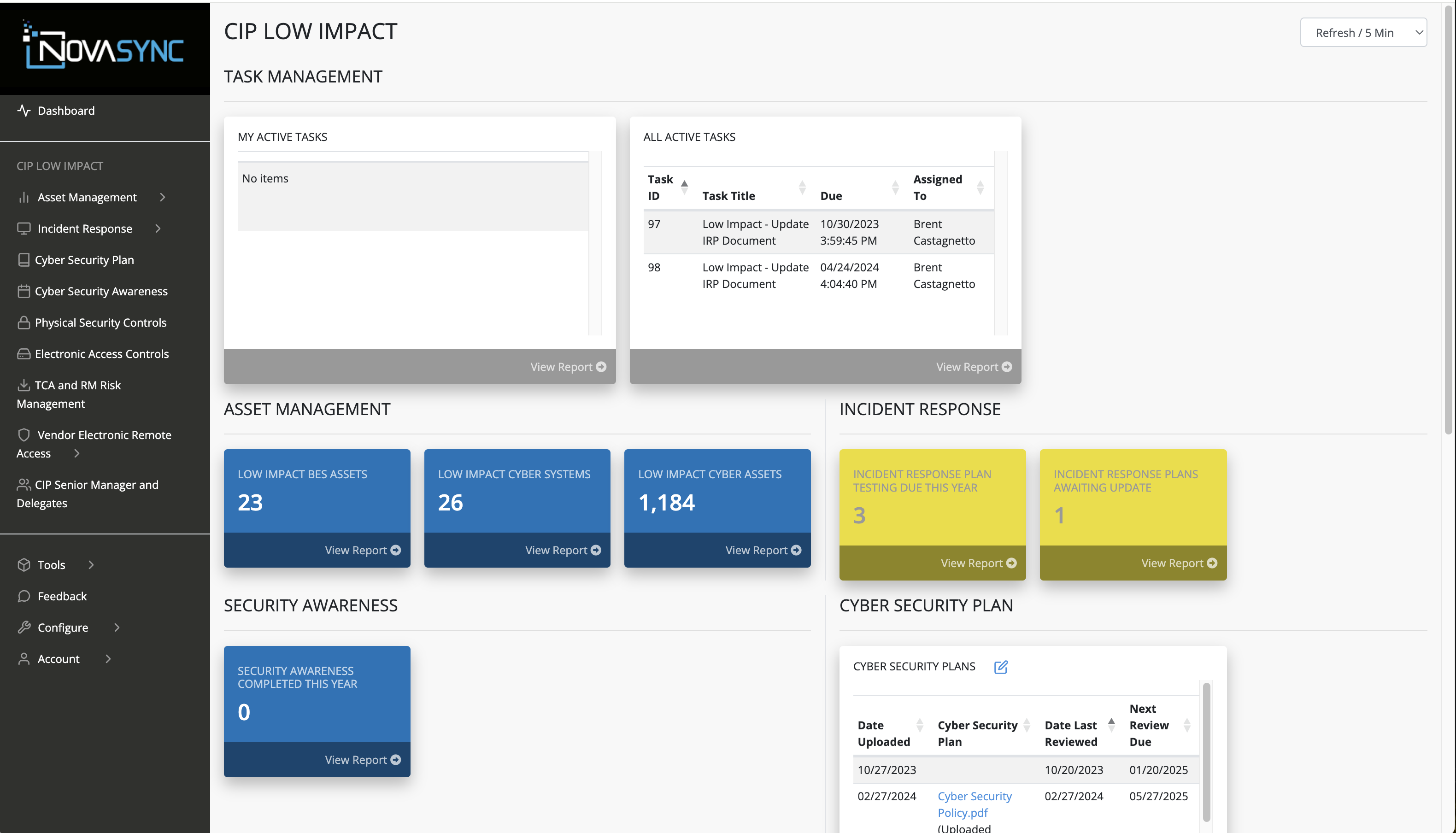NERC CIP Low Impact
The NovaSync CIP Low Impact Module is designed to effectively track and manage the low impact elements of NERC CIP-003. This module provides comprehensive solutions for adhering to the specific requirements of CIP-003 R2, ensuring that all low-impact cyber assets are adequately monitored and managed. By utilizing the NovaSync Low Impact Software Module, organizations can effectively manage and secure their low impact cyber assets in accordance with NERC CIP-003 Requirement 2, ensuring robust security and regulatory compliance. Here’s how it works:
- Cyber Security Awareness: NovaSync simplifies tracking and managing cyber security awareness reinforcement. NovaSync leverages its workflow engine to ensure your organization can demonstrate compliance with this requirement.
- Physical Security Controls: NovaSync offers a centralized location to store and manage the low impact controls required to demonstrate compliance with physical security of your low impact BES Cyber Systems.
- Electronic Access Controls: The CIP low impact module delivers a centralized location to store and manage electronic security controls applied to low impact BES Cyber Systems.
- Cyber Security Incident Response: NovaSync supports incident response planning and management for low impact BES Cyber Systems. It ensures that any security incidents are documented, managed, and resolved according to predefined incident response procedures. NovaSync can track and manage all required elements related to low impact Cyber Security Incident Response plan exercises.
- Transient Cyber Assets and Removable Media (TCA/RM): NovaSync can track and manage all activities related to the use of TCA/RM. NovaSync can require check-in check-out functionality to ensure proper use is tracked and can be reported in preparation for internal or NERC audits.
- Security Policies and Procedures: The CIP Low Impact Module facilitates the implementation, and management of security policies and procedures tailored to low impact Bes Cyber Systems. This assures all required protections are in place and compliant with applicable low impact requirements.
- Audit and Compliance Documentation: NovaSync simplifies the audit process by maintaining comprehensive records of compliance activities, access logs, security policies, and other relevant documentation. This makes it easier to demonstrate compliance during audits.
